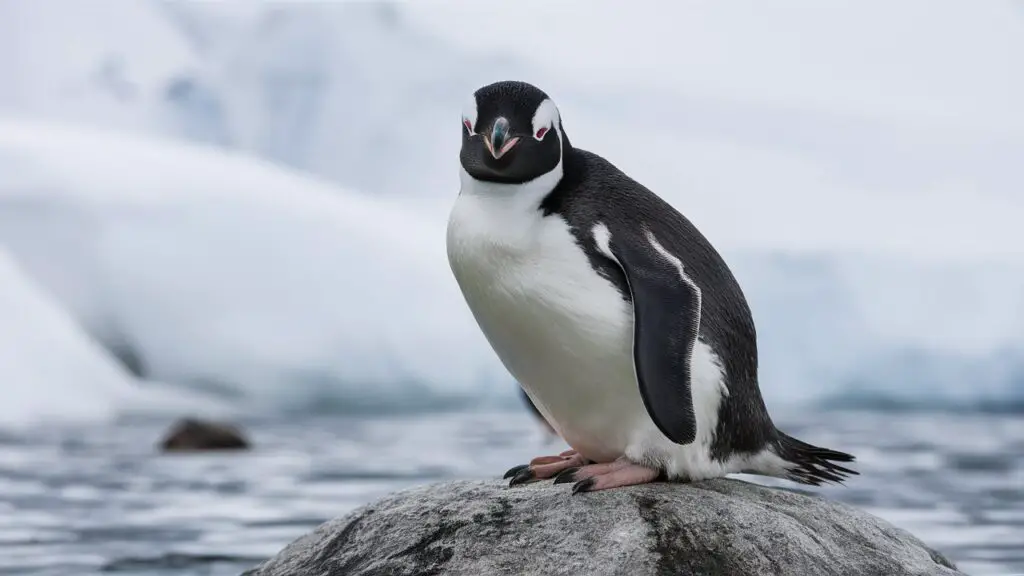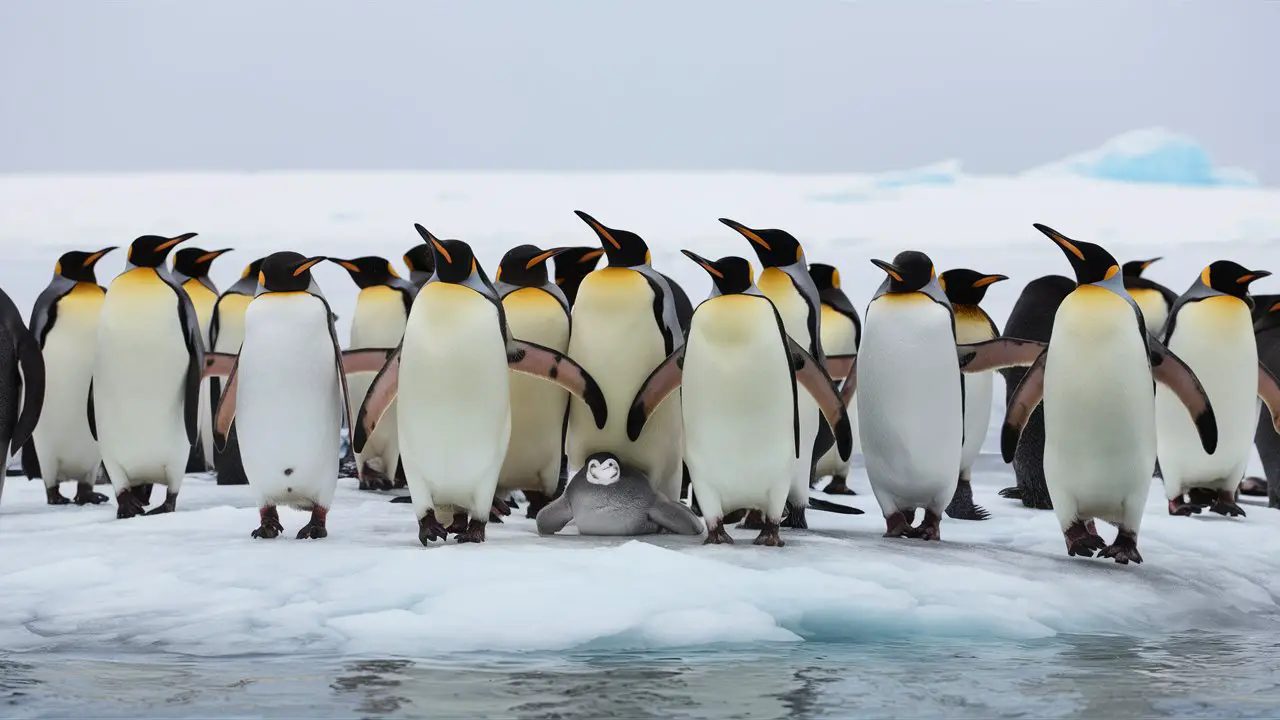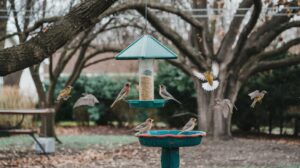As you embark on your research into the fascinating world of penguin species, you quickly discover that there is a remarkable diversity among these charismatic flightless birds. With over 20 different species across 6 genera, penguins have adapted to thrive in a wide range of climates and environments. From the largest, the Emperor Penguin of Antarctica, to the smallest, the Little Blue Penguin of Australia and New Zealand, each species has unique characteristics and behaviors. Their scientific names provide clues into these traits, as well as their evolutionary relationships. Through understanding penguin taxonomy and nomenclature, you gain deeper insight into what makes each species special. Let your curiosity guide you as you explore the diversity of penguin species and the meaning behind their scientific names.
An Overview of Penguin Species and Scientific Names
Kingdom: Animalia
Penguins are flightless seabirds that live almost exclusively in the Southern Hemisphere. They are well adapted to aquatic life, with wings that have evolved into flippers, dense feathers, and fat layers that insulate their bodies in cold waters.
Genus: Aptenodytes
The genus Aptenodytes includes the largest penguin species: the King Penguin and the Emperor Penguin. King Penguins can grow up to 3 feet tall and weigh up to 35 pounds, while the stately Emperor Penguin can reach up to 4 feet in height. Both species breed in large colonies in sub-Antarctic and Antarctic regions.
Genus: Pygoscelis
The genus Pygoscelis contains three species of brush-tailed penguins: the Adélie Penguin, the Chinstrap Penguin, and the Gentoo Penguin. These penguins are medium-sized, from 2 to 3 feet tall, and breed in colonies along the Antarctic and sub-Antarctic coasts and islands. The Adélie and Chinstrap Penguins have distinctive black and white plumage, while the Gentoo Penguin has a distinctive orange bill and white patch above each eye.
Genus: Eudyptula
The genus Eudyptula includes the smallest penguin species, the Little Blue Penguin. Reaching only about 13 inches in height, the Little Blue Penguin is found on coastlines and islands of southern Australia and New Zealand. Despite its small size, the Little Blue Penguin breeds in large colonies and is known for the bluish tinge of its plumage.
With 18 recognized penguin species spanning 6 genera, these remarkable flightless birds display an impressive diversity of sizes, breeding behaviors, and habitat ranges across the southern hemisphere. Protecting penguin ecosystems and populations is critical to preserving biodiversity in a rapidly changing world.
The 5 Main Types of Penguins and Their Scientific Classifications
King Penguins
King penguins, scientifically known as Aptenodytes patagonicus, are the second largest species of penguin. They have distinctive yellow-orange markings on their head and neck. King penguins inhabit subantarctic islands, with the largest colonies found on South Georgia and the Falkland Islands.
Emperor Penguins
The largest of the penguin species, emperor penguins (Aptenodytes forsteri) stand up to 4 feet tall. They are found exclusively in Antarctica. Emperor penguins are well adapted to the cold, with special feathers providing insulation. They are also capable of diving deep to find food. Emperor penguins form large breeding colonies during the Antarctic winter.
Adelie Penguins
Adelie penguins (Pygoscelis adeliae) are found only in Antarctica. They are medium-sized penguins, around 2 to 3 feet tall, with distinctive white eye rings. Adelie penguins feed on krill, fish and squid. They nest on rocky Antarctic coastlines and offshore islands, in large colonies that can number over a million birds.
Chinstrap Penguins
Chinstrap penguins (Pygoscelis antarcticus) have a distinctive black line under their chin, giving them their name. They inhabit the Antarctic and subantarctic islands, such as the South Shetland and South Sandwich Islands. Chinstrap penguins mainly eat krill and fish. They nest in large colonies, building nests of rocks, grass and mud.
Gentoo Penguins
Gentoo penguins (Pygoscelis papua) have an orange bill and white patch above and behind their eyes. They are found on the Antarctic and subantarctic islands, feeding on krill, fish and squid. Gentoo penguins build nests of stones, grass and mud, and breed in large colonies. They are the fastest swimming penguins, reaching up to 22 miles per hour.

Unique Traits and Behaviors of Different Penguin Species
Penguin species exhibit a variety of unique traits and behaviors adapted to their environment. King penguins, for example, form large breeding colonies of up to 300,000 individuals. During the breeding season, king penguins come together in these colonies to mate and raise their chicks. They are also known for their elaborate courtship displays and calls used to attract a mate.
In contrast, emperor penguins are best known for the males’ role in incubating eggs and raising chicks. Emperor penguin breeding colonies form on the frozen Antarctic continent each year. After the female lays a single egg, the male incubates it for up to 64 days through the harsh winter while the female returns to the sea. The male does not eat during this entire period and survives on stored body fat and proteins. Once the chick hatches, the female returns and both parents feed and care for the chick for several months until it fledges.
Some penguin species, such as gentoo and chinstrap penguins, build nests out of stones, pebbles, and feathers. Others, like the macaroni penguin, dig burrows in the soil or use natural cavities and crevices in rocks or under vegetation. In contrast, emperor and Adélie penguins lay their eggs directly on ice and snow. The male and female take turns incubating the egg to prevent it from freezing.
Penguin feeding behaviors also differ among species. While most penguins feed on krill, fish, and squid, some have specialized diets. For example, the Adélie penguin feeds primarily on krill and silverfish, and the gentoo penguin is known to consume more fish and squid. Some penguin species, like the little blue penguin, are nocturnal foragers, hunting at night to avoid predators. Others, such as the emperor penguin, feed during the day when visibility is better in the Antarctic waters.
In summary, the 17 penguin species exhibit a wide range of unique traits and behaviors adapted to their specific environments and ecological niches. From complex social behaviors to innovative survival strategies in extreme conditions, penguins continue to fascinate scientists and the public alike with their remarkable diversity.
Where to See Penguins in the Wild
There are many locations around the Antarctic and sub-Antarctic regions where you can spot penguins in their natural habitat.
Antarctica
Antarctica is home to four penguin species: Emperor, Adélie, Chinstrap, and Gentoo penguins. Traveling to Antarctica on an expedition cruise is the best way to see these penguins up close in sizable colonies. Popular spots include:
The Antarctic Peninsula is lined with research stations and penguin rookeries. Adélie and Chinstrap penguins are commonly seen along the Peninsula.
South Georgia Island in the South Atlantic Ocean hosts one of the largest King penguin colonies, with hundreds of thousands of breeding pairs. It is also home to Macaroni and Gentoo penguins. Access is by cruise ship.
Ross Island, located in the Ross Sea region of Antarctica, is home to Adélie penguins. Mt. Erebus, an active volcano, provides a dramatic backdrop for their colony. Access is by cruise ship.
The Falkland Islands, located in the South Atlantic Ocean, offer the opportunity to see five penguin species: King, Gentoo, Rockhopper, Magellanic, and Macaroni penguins. The islands have a milder climate, making landings more feasible for part of the year. Access is by cruise ship or flight from South America.
New Zealand and Australia
For those unable to travel to Antarctica, New Zealand and Australia offer opportunities to see penguins in the wild.
In New Zealand, the Otago Peninsula is home to the world’s only mainland breeding colony of Royal penguins. The peninsula can be accessed by guided tours from Dunedin.
Phillip Island, located south of Melbourne, Australia, hosts the world’s largest colony of Little penguins. Every evening at sunset, visitors can see the Little penguins emerge from the sea and waddle up the beach to their burrows. Access is by guided tours from Melbourne.
By traveling with reputable tour operators that follow strict guidelines for wildlife viewing, you can fulfill your dream of seeing penguins in their natural habitat without disturbing them. Witnessing the lives of these charismatic seabirds in the wild is a moving experience you will never forget.
Penguin Species FAQ: Your Top Questions About These Aquatic Birds Answered
What species of penguins exist?
There are currently 18 recognized species of penguins, varying in size and geographic location. Some well-known species include Emperor Penguins, King Penguins, Gentoo Penguins, and Chinstrap Penguins. The largest species is the Emperor Penguin, which can stand up to 4 feet tall. The smallest is the Little Blue Penguin, standing around 13 inches.
Where do penguins live?
Most penguin species live exclusively in the Southern Hemisphere, with the exception of the Galapagos Penguin, which inhabits the Galapagos Islands on the equator. The majority of penguins live and breed in Antarctica and sub-Antarctic islands, as well as the coasts of South America, southern Australia, New Zealand, and South Africa.
Do penguins live in the North Pole?
No, penguins do not inhabit the North Pole or the northern hemisphere. Penguins are native only to the southern hemisphere, residing in Antarctica, sub-Antarctic islands, and the coasts of South America, southern Australia, New Zealand, and South Africa. The climate in the northern hemisphere is generally too warm to support penguins.
What do penguins eat?
Penguins are carnivorous, predatory birds. Their diet consists primarily of krill, fish, squid, and crustaceans. The specific diet depends on the penguin species and geographic location. For example, Emperor and Adélie Penguins feed primarily on krill and fish, while King and Gentoo Penguins consume more crustaceans and squid in addition to krill and fish. Penguins are excellent swimmers and hunt for food in the ocean, catching prey with their beaks.
How do penguins care for their young?
Most penguin species are serially monogamous, mating with the same partner each year during breeding season. The female typically lays two eggs, and the parents take turns incubating the eggs and hunting for food. After the chicks hatch, the parents continue to feed and care for them until they are ready to survive on their own, a period of time ranging from a few weeks up to 2-3 years, depending on the species. The young penguins remain in the nest during this time, growing and developing waterproof feathers before heading out to sea.
Don’t Miss a Thing! Enhance Your Wildlife Photography with Ultra-X Night Vision Goggles.
GET NOW!

Conclusion
As you have learned, the diversity of penguin species is truly remarkable. From the largest emperor penguins to the small blue penguins, each species is uniquely adapted to survive in the challenging conditions of Antarctica and its surrounding oceans. The scientific names given to penguins provide insights into their distinguishing features and habitats. With this expanded knowledge of penguin classification and nomenclature, you are now equipped to further appreciate the wonders of these charismatic birds. Continue seeking out opportunities to encounter penguins firsthand and contribute to conservation efforts so future generations can also be inspired by their beauty and resilience.





